(This article was first emailed on March 22nd, 2021 to fans who had registered an interest in finding out more about our Tricorder.)
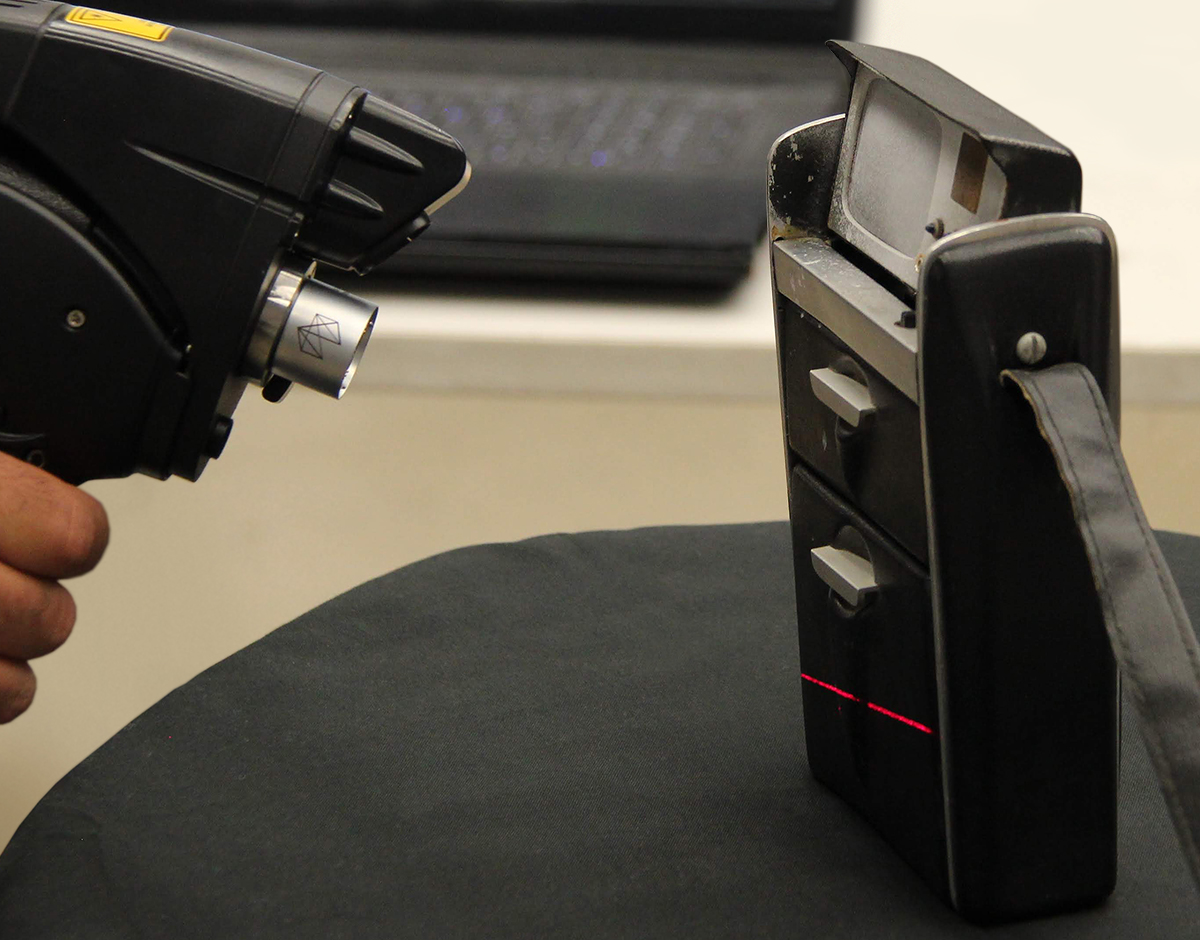
Certainly the most exciting (and probably the most important) stage of developing any prop replica from a movie or TV show is finding and studying the original screen-used prop. Whilst there’s often a wealth of information already shared by fans on the internet, and plenty of detail to be gleaned from remastered high-definition video, there’s nothing quite like getting hands-on access to an original “hero” prop.
In the creation of our Star Trek prop replicas, we’re honoured to have become friends with Greg Jein, a legendary model-maker who worked on Star Trek for around 20 years and also built props for many other sci-fi films, such as the incredible mothership in Close Encounters of the Third Kind, which is on display at the Smithsonian (Steven F. Udvar-Hazy Center in Chantilly, VA) and, having been lucky enough to see it ourselves first hand, we highly recommend visiting the museum if you’re ever near Washington Dulles airport and have some time to spare.
Greg has always been a huge fan of Star Trek and a lifelong collector – he owns several of the last remaining screen-used hero props from The Original Series, including the phaser (3D scans of which we used to shape our own Phaser replica back in 2014), and the sole remaining tricorder, which he kindly agreed to let us study for this project.
Greg’s tricorder is one of the two originals that were made by the late, great, Wah Chang in June 1966, long before anyone knew how enduring Star Trek and his prop designs were to become. The HeroComm website nicely summarises the history of the tricorder props, and designates the one in Greg’s collection as the “Wah A-B” (so-called because parts of the original two “A” and “B” units were swapped around after Season 1).
We’re based in the UK and Greg lives in California but when the tricorder project kicked off, in the pre-pandemic world of unfettered international travel, arranging a short trip to the West Coast to see our old prop-building friend was our first priority. So in early November 2019, Andrew Stockdale and Richard Blakesley flew over to Los Angeles to meet Greg Jein and his tricorder.
Arriving in the evening at LAX after an eleven and a half hour westward flight, Richard decided to walk from the airport to the hotel rather than use the courtesy bus or take an Uber. This could have been a good idea, but he has a habit of underestimating how long it takes to walk to or from airports, and of forgetting that they’re not usually designed for arrival or departure on foot. An hour or two later, Andrew and Richard dragged their bags of equipment into the hotel lobby, had a quick meal and tried to get some jet-lagged sleep. The following morning, a heartily restorative American breakfast was definitely required to prepare them for the big day ahead.

It’s breakfast Jim, but not as we know it
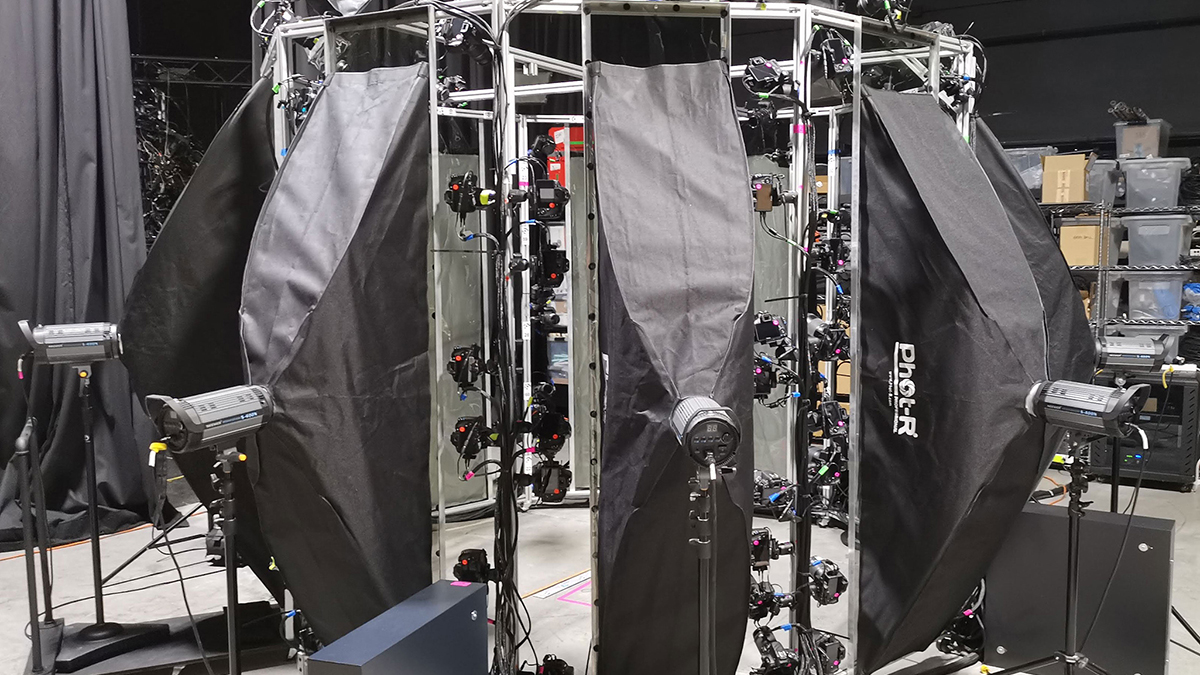
One of the photogrammetry systems at Protagon
The 3D-scanning of Greg’s phaser prop in 2014 had been done at Gentle Giant Studios in Burbank, under the supervision of Brian Adler, but he has since set up his own studio, Protagon, which was our destination this time. Finding Brian was no problem – tracking down Greg (who, some would say very sensibly, chooses not to own a mobile phone) was a little more difficult. But after Richard spent some more time walking around the streets of Los Angeles under the hot morning sun, eventually everyone was gathered in the studio and ready to study our holy grail, the original hero tricorder. (It was 80°F that day, and for us Brits, anything above 50°F in November is quite unholy.)
Scanning actors for visual effects (VFX) in movies, TV shows and videogames is usually done via a technique called photogrammetry, involving large arrays of over 100 DSLR cameras arranged in a system that looks like it might have been a prototype Star Trek transporter.
However, the 3D scanning of inanimate objects is more accurately performed with either a laser scanner or a “structured light” scanner. For the tricorder, we used a Hexagon Metrology system comprising a ROMER Absolute Arm with an RS3 laser scanning head. The arm is balanced to enable the operator to move the laser scanner smoothly around the subject, and contains seven precision encoders to keep track of the exact position of the scanning head.
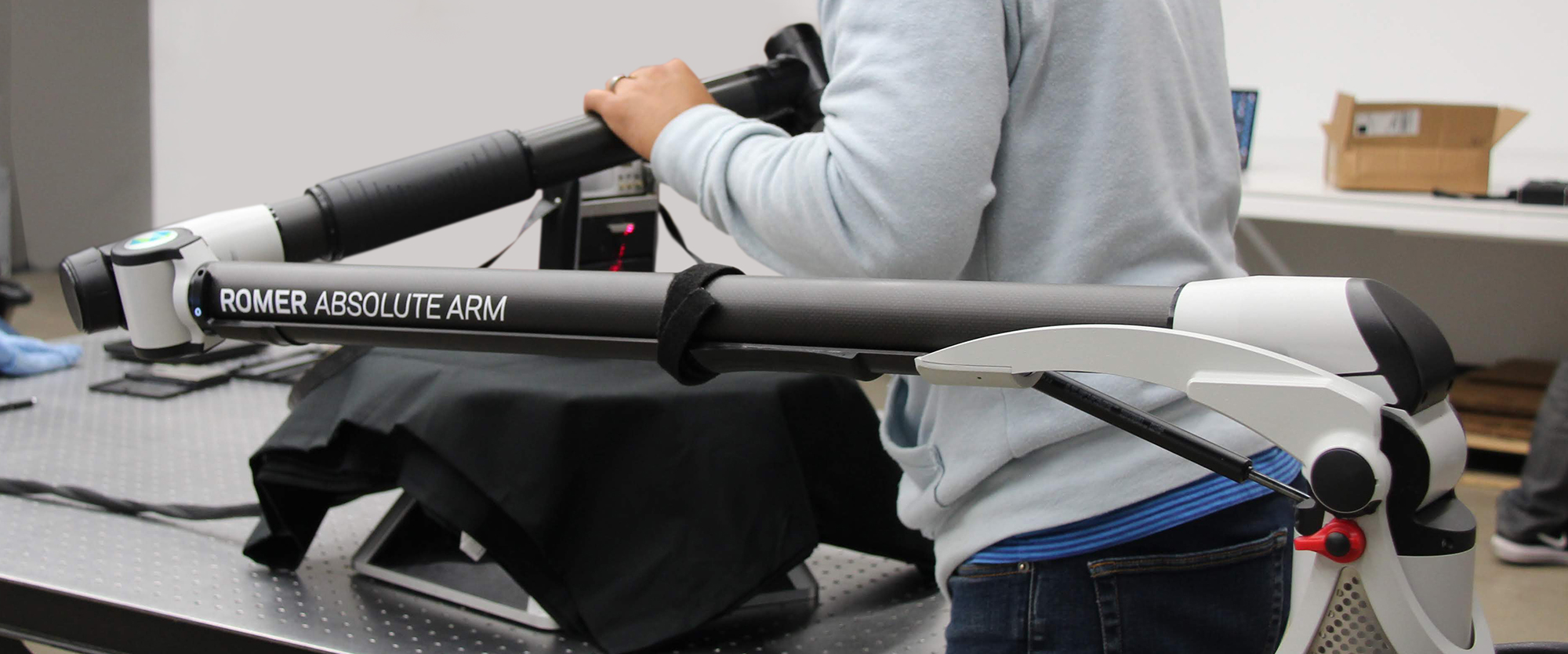
ROMER Absolute Arm with RS3 laser scanning head capturing the tricorder’s geometry
As reflective surfaces (such as metal and glass) do not scan well, before the scanning could start, the glossiest parts of this priceless prop were gently spray-coated with a scary-looking but, everyone was assured, totally harmless self-vanishing 3D-scanning spray. Greg oversaw this process to make sure that the prop wasn’t damaged.
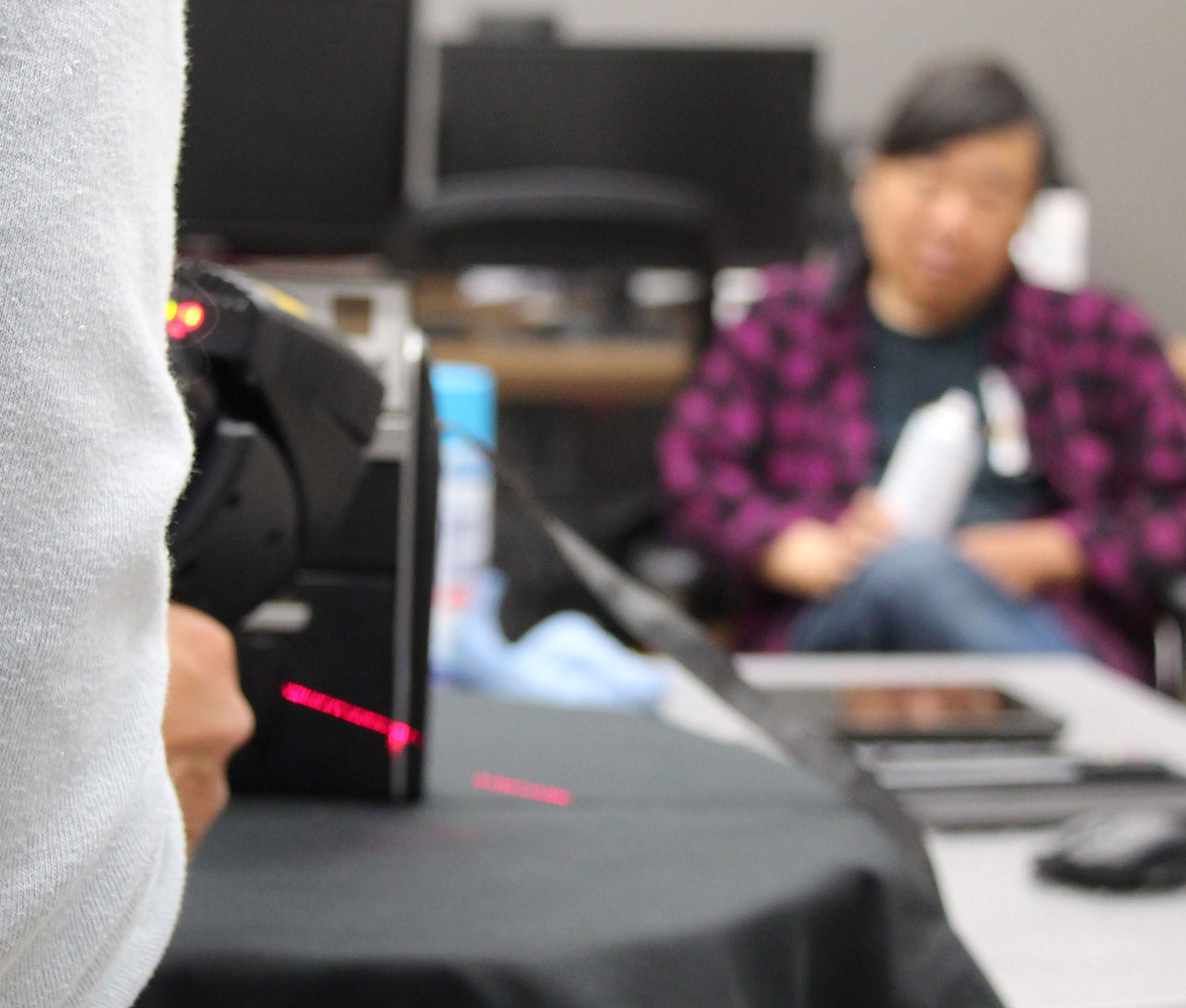
The venerable master prop maker looks on
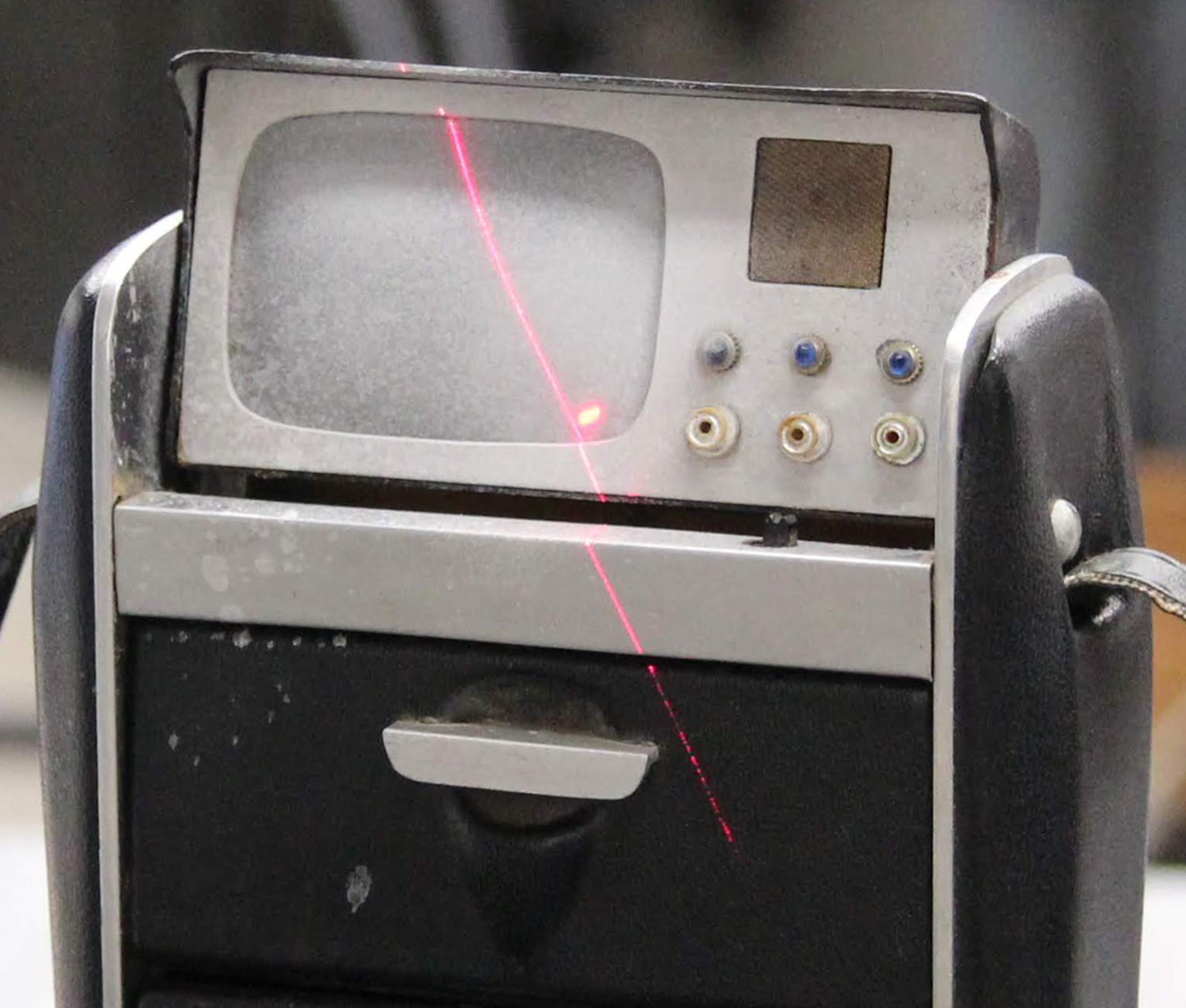
3D matt dulling spray looks a little scary but vanishes into thin air when its job is done
Under Greg’s patient and watchful eye, the laser scanner’s 65 mm long blade of red light ‘painted’ over the surface geometry of the tricorder, rapidly measuring the distance from the scanning head to the surface 4,600 times per line, plotting highly accurate positional coordinates that stitched together to build up a three-dimensional point cloud of the tricorder’s surface. On a nearby laptop, a 3D image seemed to appear out of thin air as more and more of the surface was scanned.
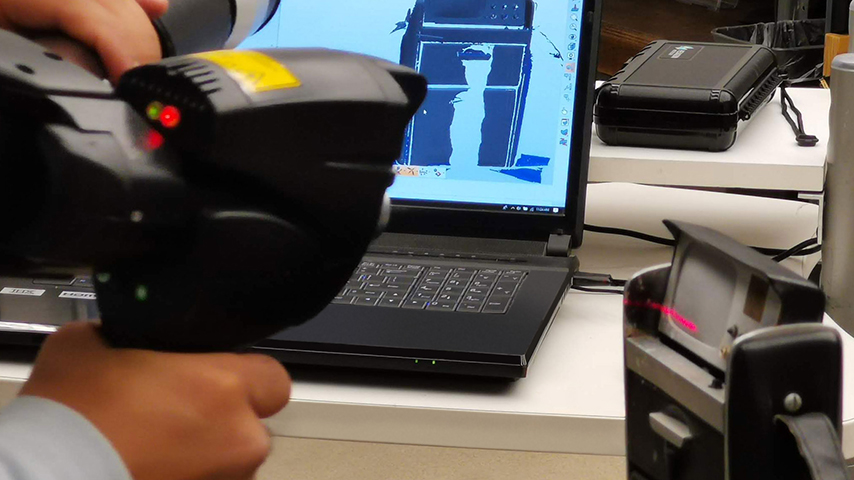
The position of the arm and the data from the laser scanning head maps the 3D geometry
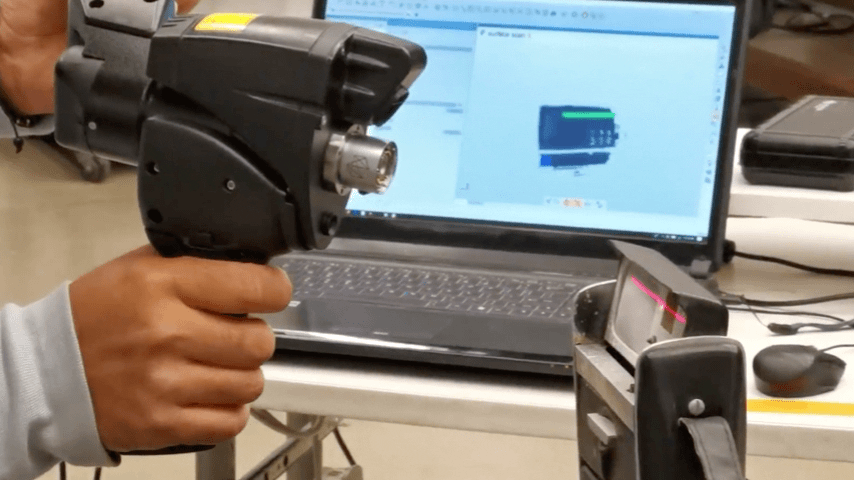
A 65 mm long blade of light paints over the surface
After checking with Greg that doing so would not damage the prop, Andrew opened the tricorder’s top and bottom doors to peer inside. As expected, the top compartment was almost completely lacking in internal features. Those details – the rack of “memory discs” and the circular moiré element – known now only from what can be seen in first season screencaps, are long gone. At some point in the summer of ’67 after the end of Season 1, the production team decided that they needed more tricorder props. The two original masterpieces were taken apart so that copies could be made and, in the process, the original props were damaged and eviscerated, with the original guts now lost forever. Opening the lower door revealed some slightly more interesting details, which Andrew has since been keen to include in our replica.
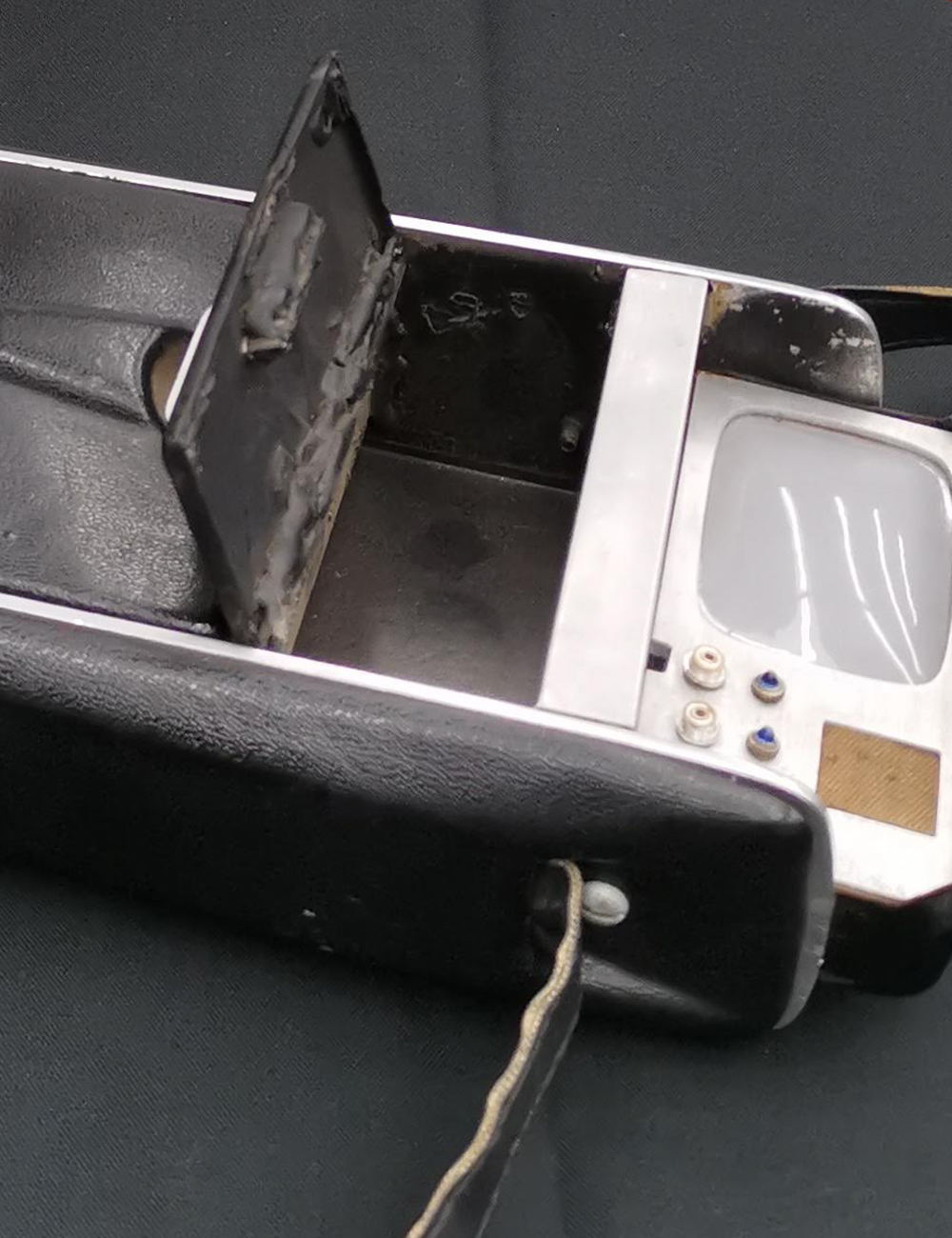
Contents were lost between Seasons 1 and 2
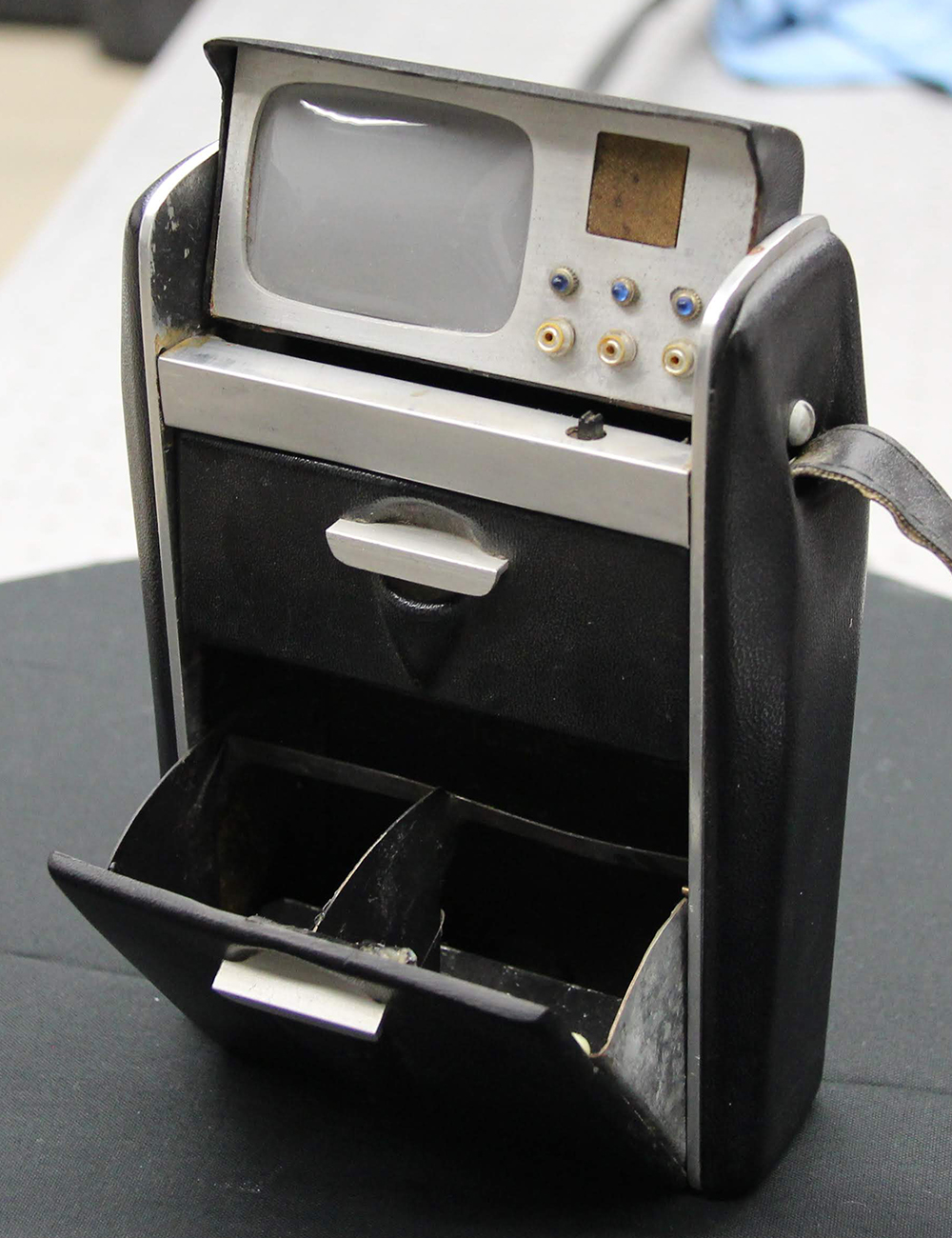
Interesting details have to make it into the replica
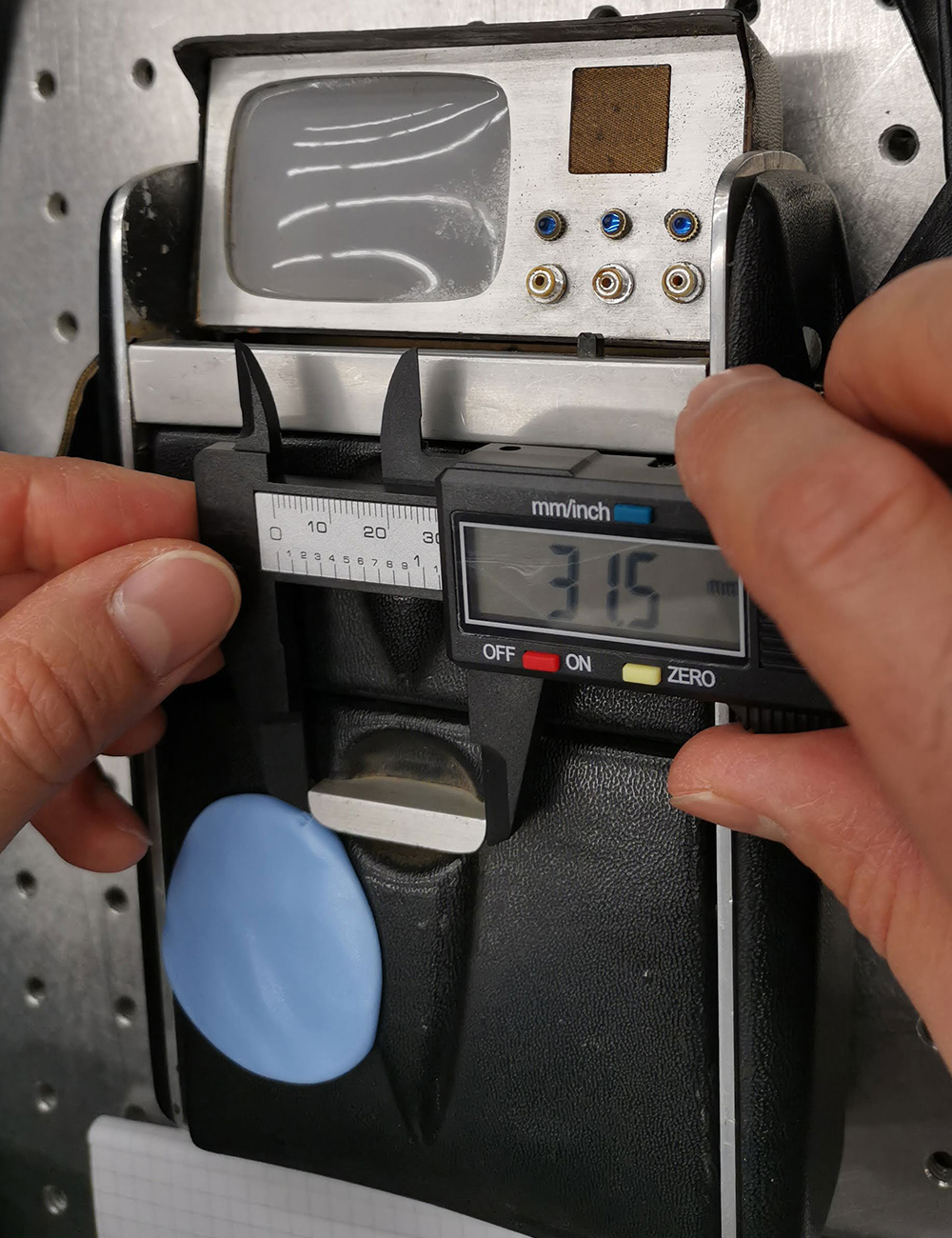
Physically measuring and handling the prop helps us bond with it
The 3D scan data is a fantastic resource for guiding our CAD modelling, but we also took as many physical measurements as possible. The measurements provide a good old-fashioned control reference and, equally importantly, handling these classic props always brings us closer to understanding the original designer’s intent. Studying these incredible items with our own hands and eyes helps us to bond with them and become immersed in their story, in a more powerful way than just watching a 3D scan emerge on a computer screen.
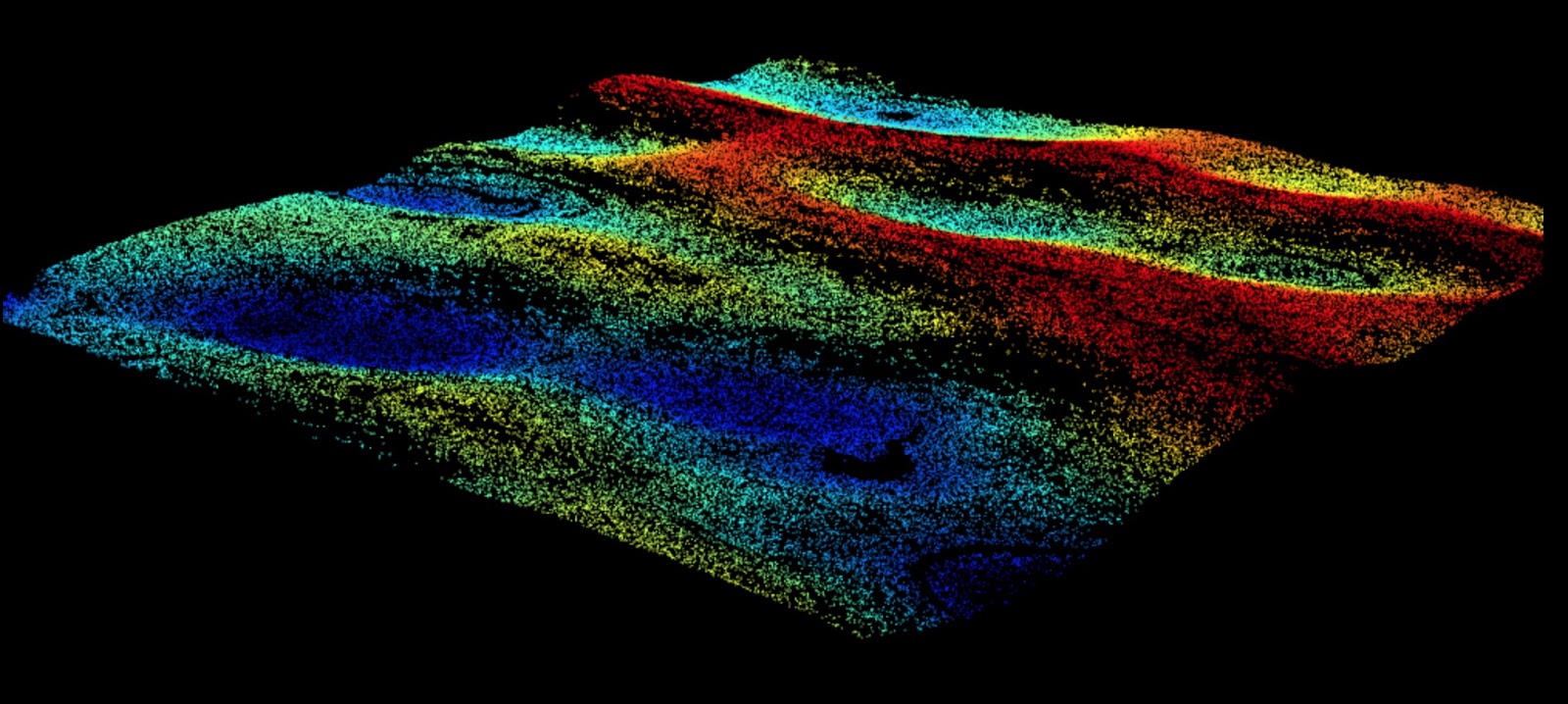
A 1 x 1 mm section of high-resolution Zygo surface profile data from a vintage Kydex sheet
The 30-micron (just over one-thousandth of an inch) accuracy of the 3D scan data is great for the overall geometry, but even finer resolution is needed to analyse the surface texture of the black Kydex material from which most of the tricorder’s body is made. We had already studied this material when developing our Star Trek Communicator replica, and had been generously loaned a piece of the original 1960s Kydex by HeroComm, which we had been able to scan with a Zygo 3D surface profiler which uses white-light interferometry to measure the surface undulations with an incredible 1-nanometer resolution (a strand of human DNA is 2.5 nanometers thick!). However, to check the way that Wah Chang’s vacuum-forming process might have stretched the Kydex texture in different regions of the tricorder, we took a few silicone rubber impressions of the surface.
For further reference, we weighed the tricorder and, of course, measured the geometry of the strap and its stitching, before saying goodbye to Greg, Brian and his colleagues and catching the early-evening flight back to the UK.
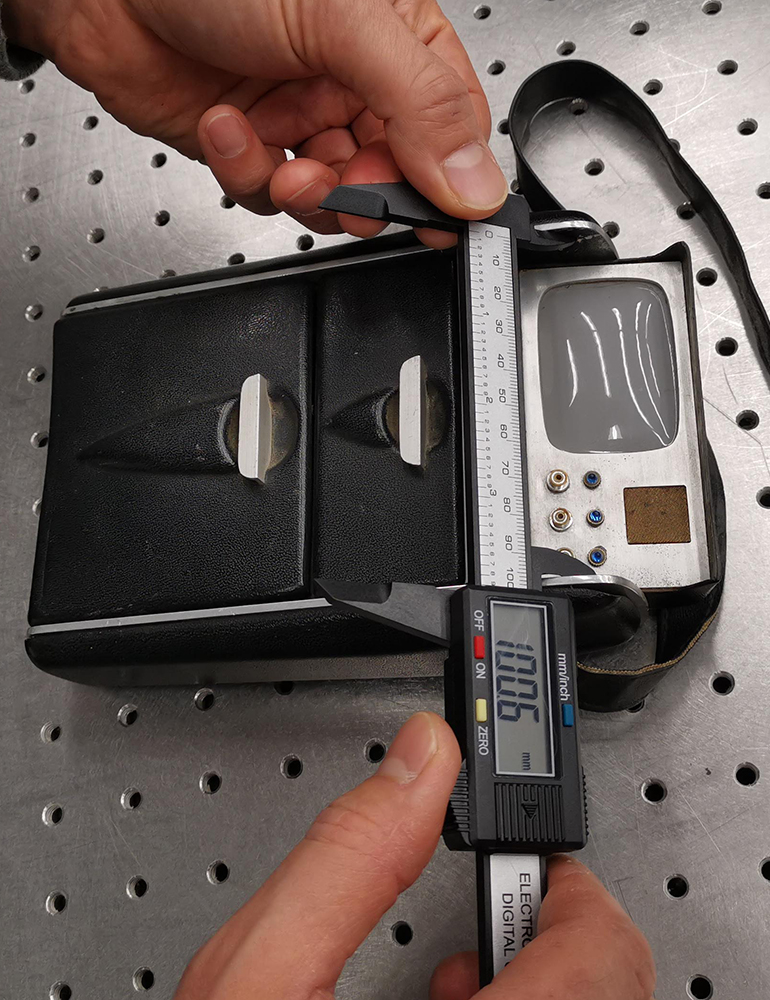
Measurements: a back-up for the 3D scan
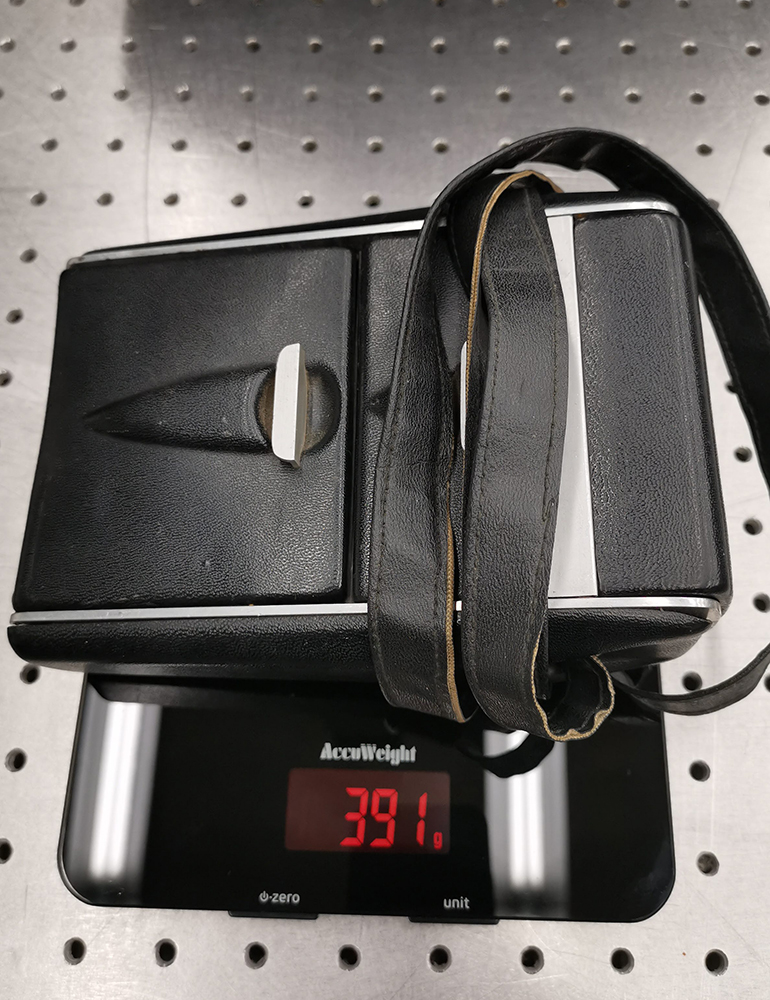
Weighing the tricorder while we have the chance
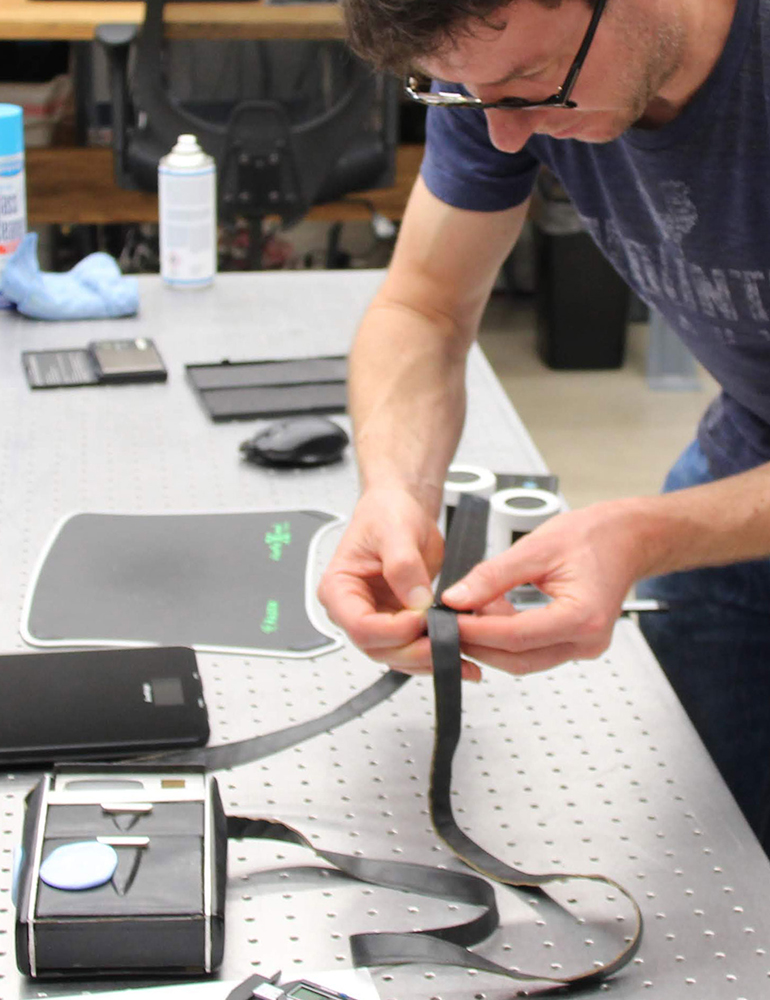
Measuring the strap and stitch pitch
Ironically, despite travelling trillions of miles from earth in its fictional lifetime, in the 55 years since it was made, the hero tricorder hasn’t ventured far from its birthplace in West Poppyfields Drive, Altadena, just 30 miles away from where it was immortalised by the red laser light on that morning in November 2019.
For us, the 9,000-mile round trip from Cambridge to California was only the start of a long development journey. Yet in some respects, it was also the beginning of the end of a longer journey that has seen The Wand Company develop the Phaser and Communicator replicas and now, with the development of the Original Series Tricorder, we’re delighted to finally complete what may be the most hallowed of science fiction trinities, the Landing Party Set.

Coming next time
Fans who register with us will be the first to read our news and the progress of this exciting Tricorder development and, later, where and when to purchase it. You can catch up with the story so far here on this blog, but if you haven’t already done so, why not register your interest in the Tricorder – you’ll then receive a personalised registration certificate and early access to these updates (before we publish them on our website).


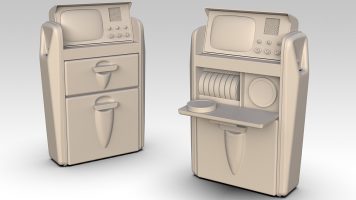
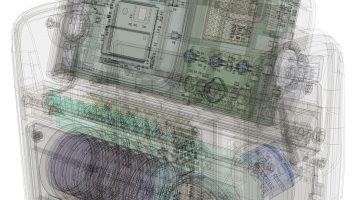
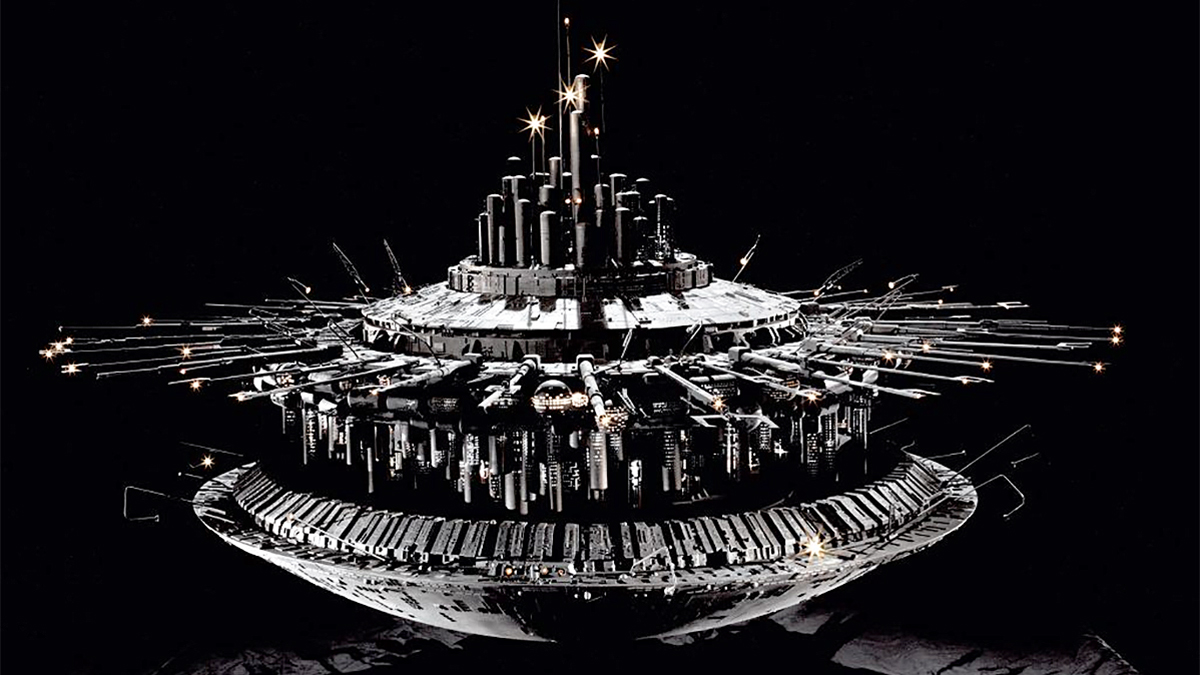
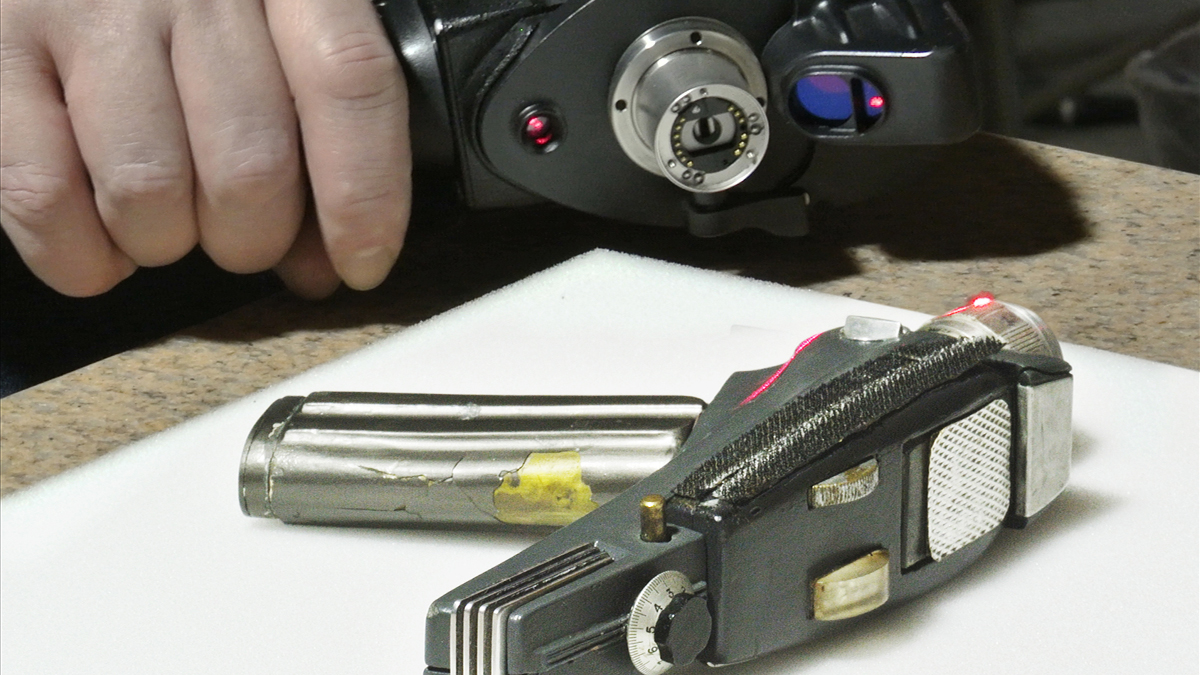
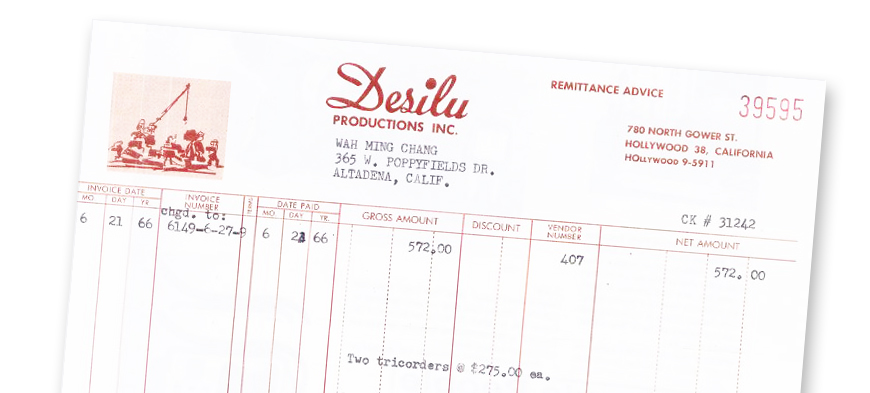
Can’t wait! Enough said
Stop teasing us! I’m 60 years old and could be dead tomorrow. Hurry up! 😀
Well, I sincerely hope not! Anyway, not long to wait now… but quite a bit of the story to come as we take you on our journey… I promise it will only make the replica better, the more you know about how we recreated the original hero prop.
If you do the same work on the tricorder that you did on the communicator and phaser, then the tricorder will be nothing short of spectacular. I purchased two communicators and two phasers, in order to have one to “use” and the other to keep in the box. I will definitely want two tricorders for the same reason.
Pas reçu d’email malgré mon inscription.
Je suis désolé que vous n’ayez pas reçu l’e-mail de nouvelles de Tricorder. Tout d’abord, avez-vous enregistré votre intérêt? Nous avons constaté que certains e-mails de mise à jour n’étaient pas envoyés immédiatement lorsque nous avons initialement envoyé la mise à jour. Il s’agissait principalement d’adresses e-mail AOL. Puis-je s’il vous plaît vous demander de vérifier à la fois vos dossiers de courrier indésirable et de spam, au cas où l’e-mail y serait par erreur? Veuillez également noter que l’e-mail et notre blog sont rédigés en anglais. Merci.
Hello, I confirm that of the 4 people registered by French email, none received it. We are registered and none of our addresses are AOL. We looked into spam and unwanted files. Please note that we write in the language of the blog. Thank you
Thank you for letting us know. I have no idea what caused the emails not to be received by you and the other people you mention. We sent out the email newsletter to everyone that registered. However, there were some issues with some fans not receiving their emails. We are not 100% sure whether this was an issue on our end or on the receiving end, but in the majority of cases, we can see the failure to receive the email was due to the incoming email being stopped as if it were spam. Spam mail and constant marketing emails are the scourge of all of us and various email clients treat incoming mail differently in an attempt to stop spam from reaching you. Unfortunately, that means that some regular emails that you want to receive get blocked by that process. It is a national holiday weekend here in the UK so, early next week when we are back at work, we will look into why you and the other people you mention did not receive your emails. In the meantime, please can you email us at support@thewandcompany.com with your email address and that of the three other people you said did also not receive their newsletters.
Hello – sorry for the trouble that you’ve had receiving our emails. I just checked our email sending records and can see that the Yahoo.fr mail server rejected our emails to you on the first sending attempts (on 9th and 22nd March), but the messages were received OK by the Yahoo server when we re-sent them on 11th and 25th March. Could you double-check your spam folder for those days, please? As Chris said, please feel free to email us at support@thewandcompany.com and we’d be happy to help you further.
That lower compartment would be an interesting spot to put a USB and/or HDMI port…just in case anybody was thinking about inputs and outputs. 🙂
I’m with the Davids! So cool to see this come together!
I just happened to visit the site out of curiosity and discovered the news! I am SOOOOOOO loking forward to this and will DEFINITELY be buying one! I have been waiting for this day when you complete the ‘trilogy’ as it were. 🙂
Wow. Looks so cool. Looking forward to owning.
As a side note, I’m going to put this out there again, just short of beating a dead horse. I still think a Gary Seven servo has market appeal. The only Trek prop that has never been officially done. You guys could do it. Lights, sounds, dials,…maybe even write. Would be cool!
Help us Obi Wan Barnardo, you’re my only hope!
I think in a big way we’ve been there already with the sonic screwdrivers, especially the Tenth Doctor’s version. I agree though it does look cool, I just don’t think the market is there for it.
Looking forward to this! Have you ever thought about the timer from Sliders?
Thanks Randy! Yes, we did have a couple of discussions about the timer from Sliders a few years ago, but I’m afraid it’s not something that we’re actively pursuing at the moment.
Thank you for the updates. I’m really looking forward to purchasing this and completing the set.
WOW… Update #3 is amazing!
Thanks
Agreed! It was a great update. And in studying them all, I’ve learned a lot about the design and function of the Tricorder so far – from where the power port will supposedly be to the apparent existence of a microSD card slot.
I’m drooling here. Can’t wait to learn more!
I’m so excited about completing my landing party set I think I feel like I want to just sleep till it comes out cause the wait is killing me.
So waiting to complete the set!
I’m ready for mine now